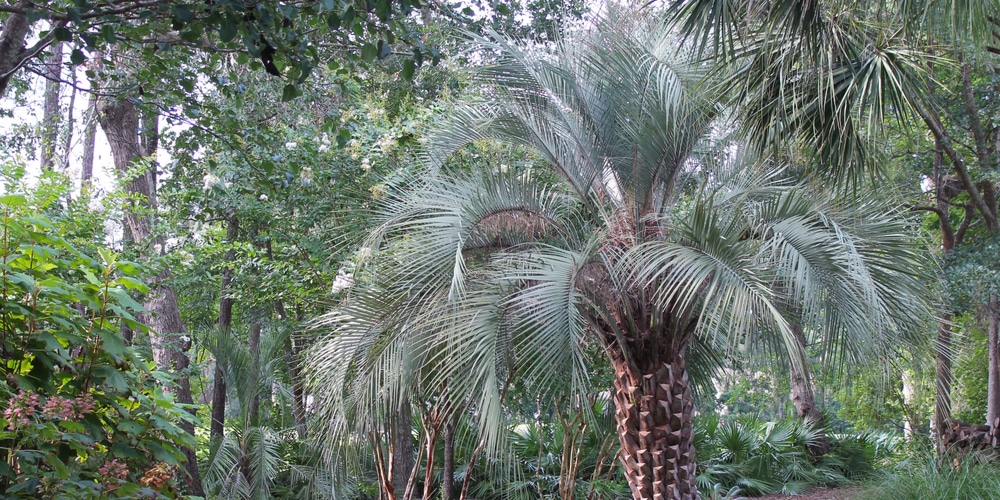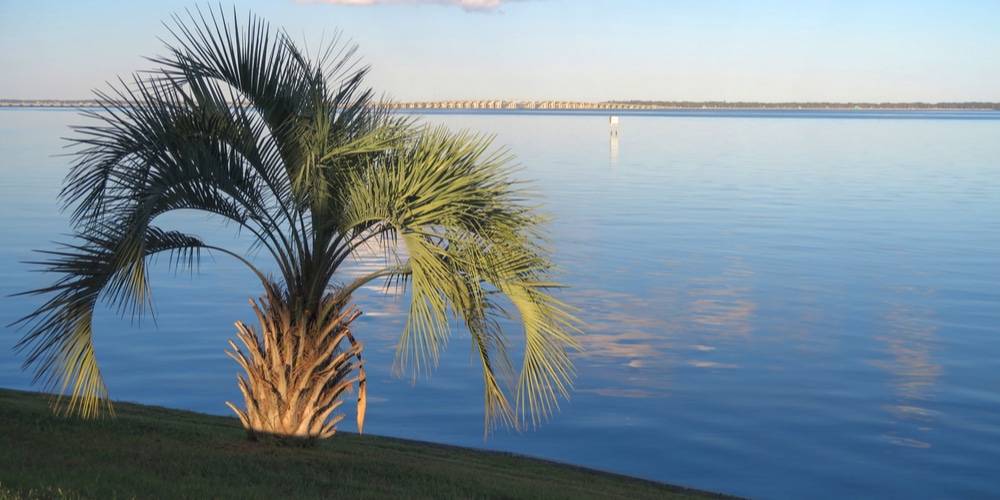Arizona is home to a lot of palm tree landscapes and yards. There’s just something about its stature and the way palm trees draw your eyes upwards to their beautiful and graceful swaying foliage that makes them very popular.
If you’re thinking of growing Pindo Palm in Arizona, you’ve come to the right place. These palm trees are not native to Arizona but you should be able to grow and take care of them without too much trouble.
Does Pindo Palm Do Well in Arizona?
Pindo Palms or Butia capitata are often called jelly palms as they produce fruit that can be turned into jelly. The sweet fruit attracts various wildlife and is usually brown-red to light orange in color.
The Hardy Pindo grows at a slow rate and can reach up to 20 feet (or 240 inches), with a trunk that spans 1.5 feet (or 18 inches). The plant is categorized as a cold-hardy perennial plant and is native to Brazil, Uruguay, and Argentina.
In the US, the pindo palm is classified in growing zone 8 and can usually tolerate cold temperatures down to 5 degrees F, or minus 15 degrees C). In comparison, the state of Arizona has a growing zone range of 4 through 10, with most regions being in zones 9 and 10.
That said, Arizona is a suitable region for growing Pindo Palm as long as you give it the right location and plenty of water. The arid and hot climate can tax palm trees in general, but they’re usually drought tolerant and can survive a missed watering from time to time.
How to Care for a Pindo Palm in Arizona
Watering is Essential
Aside from the sun, palm trees, in general, like to get plenty of water and thrive in highly humid areas. There’s no shortage of bright and direct sunlight in Arizona, but you have to make sure your pindo palm is getting the water it needs to stay healthy.
Newly planted palms should be given regular irrigation, especially while they’re young. A general rule of thumb is to water your pindo palm daily and if temperatures reach 100 degrees F or higher.
Drip watering, or leaving a hose opened to allow a trickle of water is recommended. Make sure that you’re giving enough water to reach all the tree’s roots.
Pindo palms should be able to survive the desert-like conditions in Arizona as long as you keep the soil relatively moist.
One way to check if you’re under-watering is to check for signs such as wilting leaflets, the tips of the foliage browning, and slowed growth.
Fertilize as Needed
Pindo palms do well when they’re fed with a special formula for palms, or something that has an NPK ratio of 8-4-12. Granular or liquid fertilizer is fine as long as you follow the manufacturer’s instructions for proper application.
Apply fertilizer evenly over the tree’s canopy, then water it in so the roots can get a good soaking. You can do this four times per growing season or less if your pindo palm isn’t showing any signs of stress.
Feeding with micronutrients designed for palm trees is welcome.
Prune and Keep Away Pests
The Pindo Palm will need a bit of pruning and maintenance to keep it looking its best. The flowers quickly turn into fruit and fall to the ground when ripe. Part of a pindo palm Arizona owner’s responsibility is to pick them up so the fruits won’t cause a mess.
This palm variety does not self-clean, meaning they do not shed old and dead leaves. You can safely prune or cut away dead fronds using the right tools. Make sure to sanitize the shears so they won’t cause an infection. Don’t remove or cut off healthy green fronds even if they exhibit browned tips or scorching in some parts.
Palm trees like getting a shower now and then, and this can be done during summer and really hot days. Make sure to give your pindo palm a good hosing to dislodge sucking pests and increase humidity around the plant.
Other than that, your pindo palm should thrive in locations where there’s full sun and when it’s sitting in well-drained soil.
Related article: Pindo palm Growth Rates

